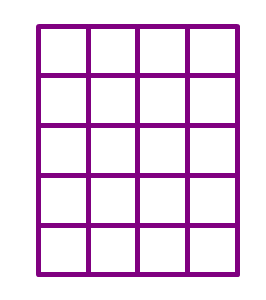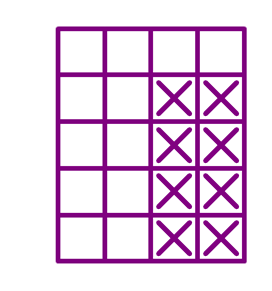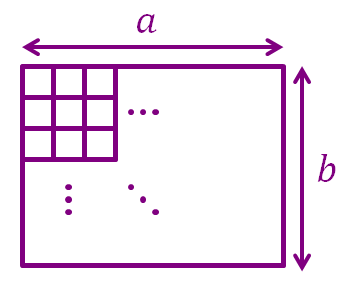How to Count Rectangles!
Hi there! Me again. *munches*
Sorry, I still haven't finished my hamburger since the last time we count squares, I hope you don't mind that.
Anyway, we are here to see how to count rectangles of a certain size in a grid.
Consider this question: How many rectangles are there in the grid below?

I'm a little bit picky here, note that dimensions here are expressed as widthheight, so in this case I only want rectangles (that is, a rectangle of width 3 and height 2) and not the ones.
If we mark an 'X' on every bottom-right corner of every rectangle, we would see this:

Hey, that means counting the number of rectangles in the original grid is the same as counting how many X's are there, or in other words, it is the same as counting the number of unit squares in an grid.
There are unit squares in a grid, therefore, the number of rectangles in the original grid is 8! Hooray!
*munches*
Mmm... so in general, how many rectangles ( is the width of the rectangle, is the height of the rectangle) are there in an grid ( is the width of the grid, is the height of the grid), given that and ?

Again imagine marking an 'X' on every bottom-right corner of every rectangle, we will get a grid full of X's.
The width of the "X grid" is , while the height of the "X grid" is .
Since the number of rectangles in an grid equals the number of unit squares in the "X grid", hence the number of rectangles in an grid is
*munches*
The number of ( is the width of the rectangle, is the height of the rectangle) rectangles (the exact rectangle, not including rotated variations such as ) in an grid ( is the width of the grid, is the height of the grid) provided that , is
Easy Math Editor
This discussion board is a place to discuss our Daily Challenges and the math and science related to those challenges. Explanations are more than just a solution — they should explain the steps and thinking strategies that you used to obtain the solution. Comments should further the discussion of math and science.
When posting on Brilliant:
*italics*or_italics_**bold**or__bold__paragraph 1
paragraph 2
[example link](https://brilliant.org)> This is a quote# I indented these lines # 4 spaces, and now they show # up as a code block. print "hello world"\(...\)or\[...\]to ensure proper formatting.2 \times 32^{34}a_{i-1}\frac{2}{3}\sqrt{2}\sum_{i=1}^3\sin \theta\boxed{123}Comments
I think another way to do it is breaking them up. For example, if we want to count the number ot rectangles in 10×10 grid, is first counting the number of rectangles in 10×1 grid then xounting the number of rectangles in 10×2 grid, then in 10×3, and so in, in this way we would be able to establish a pattern in the number of rectangles, and by arithmetic/geometric progression, we would het the answer.
Log in to reply
Yes, but in this case I only want to count rectangles of a specific size.
Log in to reply
We can do in that case too. Your questions are awesome.
You may see the solution of my problem to see my approach.